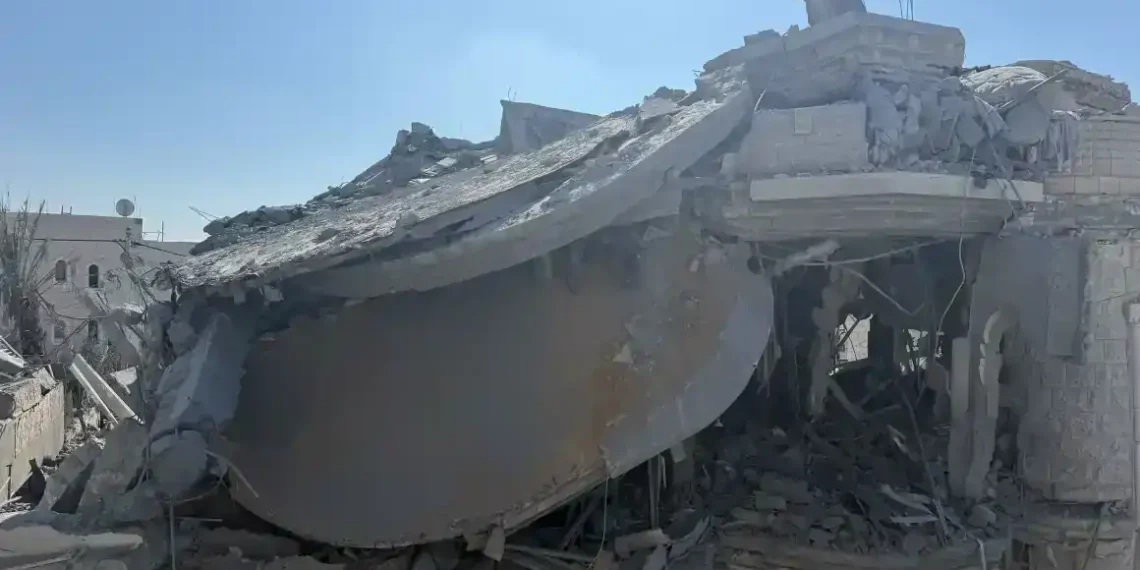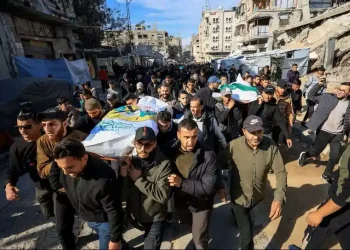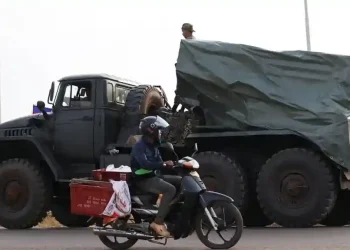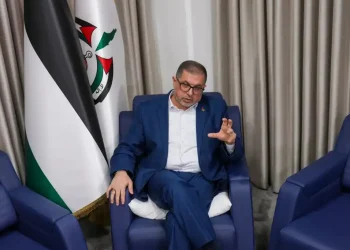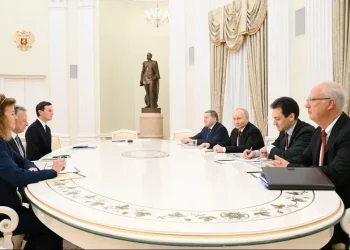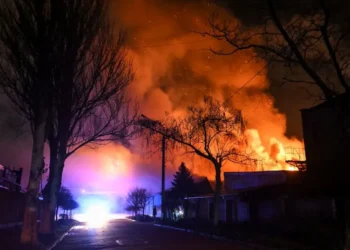Tamra Tragedy: Iranian Missile Strike Exposes Shelter Inequality in Palestinian Israeli Towns
When an Iranian missile slammed into the northern Israeli town of Tamra late Saturday night, it didn’t just leave a crater in the street — it tore through a community long neglected by Israel’s civil defense infrastructure.
The strike killed four members of the Khatib family, including local teacher Manar Khatib, her two daughters Shatha (13) and Hala (20), and a relative, Manar Diab. Only Manar’s husband, Raja, and their youngest daughter, Razan, survived — the latter because she happened to be sleeping in the family’s makeshift shelter.
Tamra, a predominantly Palestinian town inside Israel, had never been hit like this before — not even during previous cross-border flare-ups with Hezbollah in southern Lebanon. The strike, part of Iran’s recent wave of direct attacks on Israel, has reignited anger over what residents call systemic inequality in public safety and emergency preparedness.
“There Were No Safe Places”
On Sunday morning, grief gave way to frustration. The street where the Khatib home once stood was filled with bulldozers, shattered glass, and scorched cars. Neighbors and volunteers combed through rubble, many in shock.
“It was chaotic. We found body parts in the street,” said Mohammad Diab, a local emergency volunteer. “We never imagined this kind of destruction would reach us.”
That sense of disbelief was echoed by 25-year-old neighbor Mohammad Shama, who said the attack brought fear closer than ever before.
“We knew things with Iran were escalating,” Shama told CNN, “but we didn’t think it would hit us right here at home.”
Shama said he rushed over after hearing the explosion, and it was clear that the only reason Razan survived was because she was in the one room they used as a shelter.
The problem? Most homes in Tamra don’t have even that.
A Shelter Shortage With Deadly Consequences
Tamra’s mayor, Musa Abu Rumi, told reporters that only about 40% of the town’s 37,000 residents have access to a safe room or working shelter. There are no public bomb shelters in Tamra — a stark contrast to most Jewish-majority towns in Israel, where shelters are common and government-funded.
“The government has never financed the construction of shelters in our town because they have other priorities,” said Abu Rumi.
“We’ve opened up schools now so people have somewhere to sleep.”
The mayor now hopes to use the attention from visiting government ministers to push for real change. He’s calling for an end to the neglect and a bridge across the divide between Jewish Israelis and Palestinian citizens.
A Systemic Gap
The tragedy has reignited calls for equal protection under Israeli law. A new report by the Israel Democracy Institute found that Arab towns remain dangerously under-protected, nearly two years into ongoing regional conflict.
Shelters are legally required in every residential building built in Israel since the early 1990s. But enforcement and funding, critics say, are uneven at best — and in Arab towns, often ignored.
“Many Palestinian communities in northern Israel still lack public shelters or fortified areas,” said the Association for Civil Rights in Israel in a statement, calling out the “significant disparity” in civil defense readiness between Arab and Jewish towns.
Pain Deepens Amid Hate-Fueled Division
The attack has also peeled back layers of division within Israeli society. In a neighboring Jewish town, Mitzpe Aviv, video footage circulated on social media showing residents cheering as Tamra was hit, shouting: “May your village burn!”
The video drew outrage.
“This is the result of the racism and fascism spreading in Israeli society,” said Knesset member Ahmad Tibi.
Naama Lazimi, another Knesset member, called it a moment of “shame and disgust,” saying it exposed “a state with racist and abandoning policies.”
For many in Tamra, the cruelty stung almost as much as the missile.
“In your own country, you are treated as a stranger — even as an enemy. Even in your death,” said resident Nejmi Hijazi.
Meanwhile, some Palestinians in occupied East Jerusalem were seen celebrating Iran’s strikes on Tel Aviv in separate social media videos. One person was detained, prompting Israel’s National Security Minister Itamar Ben Gvir to vow punishment for “anyone who celebrates with the enemy.”
A Town in Mourning
As night fell again over Tamra, many residents chose not to sleep at home. Some refused to sleep at all.
Manal Hijazi, a neighbor, said she’s haunted by what she saw:
“I can’t forget the image of the little girl trapped under the rubble.”
Manar Khatib, the woman killed in the blast, was beloved in Tamra. She had taught generations of students — including Raghda, a neighbor whose own house was damaged in the strike.
“I was lying in bed with my three daughters when the rocket hit. It all happened in front of my eyes,” Raghda recalled, still shaking.
“There’s no way I’ll be sleeping here tonight.”
What’s Next for Tamra?
For residents, the grief is compounded by a simple but chilling realization: this didn’t have to happen. For years, they’ve asked for better infrastructure, for safety, for equal treatment — and now, after a night of fire and horror, they’re asking again.
Whether Israel’s leaders will respond with more than condolences remains to be seen. But in Tamra, the scars — both visible and emotional — may take far longer to heal than the shattered glass on the street.
This article was rewritten by JournosNews.com based on verified reporting from trusted sources. The content has been independently reviewed, fact-checked, and edited for accuracy, neutrality, tone, and global readability in accordance with Google News and AdSense standards.
All opinions, quotes, or statements from contributors, experts, or sourced organizations do not necessarily reflect the views of JournosNews.com. JournosNews.com maintains full editorial independence from any external funders, sponsors, or organizations.
Stay informed with JournosNews.com — your trusted source for verified global reporting and in-depth analysis. Follow us on Google News, BlueSky, and X for real-time updates.
